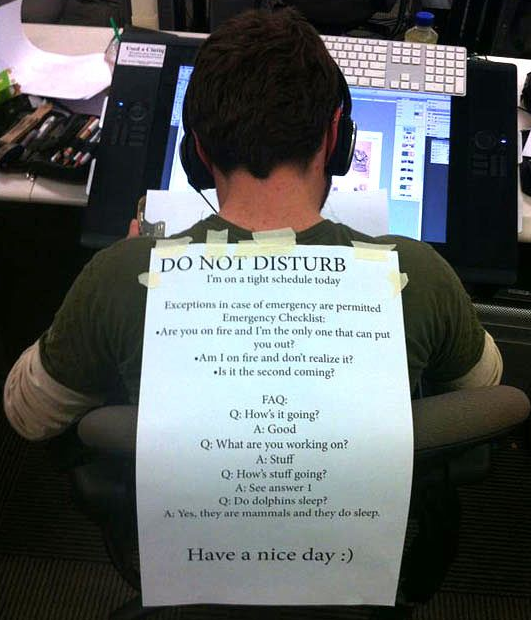We've been adapting to life in a shared, open workspace environment. Most of us in the Taylor Institute are in pods, trying to balance productivity, collaboration, distractions, competing demands for attention. It's hard to describe what it's like, but it adds overhead on top of everything. Quincy describes it well, from the perspective of s programmer, but I think it applies to the rest of us as well.
Let's talk a bit about how us humans get work done. Is it four hours of crushing it, a lunch break, then four more hours of crushing it? No. It's more like coffee, email, coffee, meeting, coffee, lunch with coworkers, coffee — OK finally time to get some work done!
And
But employers, for the most part, don't listen. They continue to cram their teams together into noisy open plan offices. They continue to pepper their teams' days with meetings. They expect their teams to be responsive to emails or Slack, further dashing hopes of ever reaching a flow state and getting some real work done.
Source: Live asynchronously.
I don't know how to respond to this. Our workspaces are likely much smaller than the 190 square feet described as small in the article. And we seem to have a lot of meetings. So many meetings, that I've reduced the number of times my team meets as a group partially in response - and now we've become somewhat disconnected. Haven't found the right balance yet…
We've added Luxafor indicators to each pod - green light means come talk, red light means do not disturb. Even that isn't working - often, I forget to set the indicator at all, so it's off. Or, it'll be red and "hey. So, I noticed the light is red. Are you really in the middle of something, or should I come back later?" (Always from one of the few who have a private office)
How to balance competing demands for collaboration/connection with productive/creative/flow?
